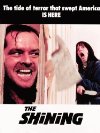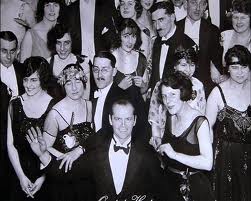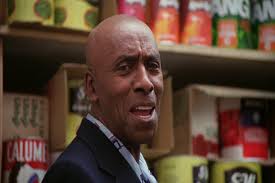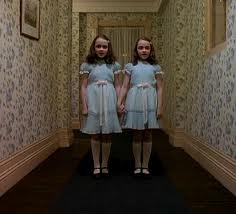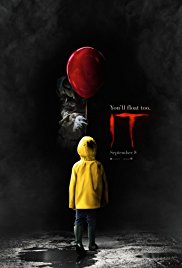 Greetings again from the darkness. There are two clown schools: Funny clowns (Bozo, Ronald McDonald), and Terrifying clowns (the one in POLTERGEIST, Pennywise the Dancing Clown). Stephen King first introduced Pennywise in the 1986 novel, and the great Tim Curry brought him to life (and our nightmares) in the 1990 TV mini-series (2 episodes). So, that’s 27 years since the TV version. How fitting that director Andy Muschietti (MAMA) introduces a new generation 27 years later, since that’s how often the supernaturally evil clown visits Derry, Maine to frighten and feast on kids. It’s a terrific update.
Greetings again from the darkness. There are two clown schools: Funny clowns (Bozo, Ronald McDonald), and Terrifying clowns (the one in POLTERGEIST, Pennywise the Dancing Clown). Stephen King first introduced Pennywise in the 1986 novel, and the great Tim Curry brought him to life (and our nightmares) in the 1990 TV mini-series (2 episodes). So, that’s 27 years since the TV version. How fitting that director Andy Muschietti (MAMA) introduces a new generation 27 years later, since that’s how often the supernaturally evil clown visits Derry, Maine to frighten and feast on kids. It’s a terrific update.
Horror films are similar to comedy films in that it often comes down to one’s own personality quirks … what makes you laugh, and what scares you. This new version covers the first half of King’s novel, focusing on “The Losers Club” – the seven kids who band together to fight their fears. Director Muschietti sets the story in 1989 (rather than the 50’s) and the obvious comparisons are to THE GOONIES, STAND BY ME (another King story), and the recent hit “Stranger Things”.
The opening sequence gets us off to a great start. You’ve probably seen it in the trailer. Young Georgie (Jackson Robert Scott) is joyfully splashing through the rain puddles following his paper boat as it disappears into the storm drain. It’s there that he meets, and we get our first look at, Pennywise (Bill Skarsgard, son of Stellan and brother of Alexander). Giving us an early peek at what we came to see creates time for the development of a long list of characters. Of course the mini-series and the novel didn’t have the time restrictions of a feature film, so it’s impressive how quickly we connect with the kids.
Georgie’s older brother Bill (Jaeden Lieberther, MIDNIGHT SPECIAL) is the leader of The Losers despite his propensity to stutter, and his belief that little Georgie may still be alive. Motormouth Richie (Finn Wolfhard, “Stranger Things”) is the bespectacled wiseass, while Beverly (Sophia Lillis, an Amy Adams lookalike and star in the making) is the tough-on-the-outside female who deals with the rumors that accompany being a teenager. Hypochondriac Eddie (Jack Dylan Grazer), straight-laced son of the Rabbi Stanley (Wyatt Oleff), chubby brainiac new kid Ben (Jeremy Ray Taylor), and home-schooled Mike (Chosen Jacobs) round out this group of outsiders who are all frequently the target of bully Henry Bowers (Nicholas Hamilton), creepy parents, and of course, Pennywise.
A couple of the set pieces are outstanding. Beverly’s bathroom (especially the sink), the creek for the rock fight, and the rickety old house and its corresponding clown lair all contribute to the overall level of menace. Rising star composer Benjamin Wallfisch produces a score that guides us through the thrills and spills, as well as the quieter moments. As for Pennywise, even though the dancing clown had more screen time in the mini-series, Skarsgard is memorable, although the modern day special effects (those teeth!) often diminish the humanistic feel of Curry’s clown and escalate things to an other-worldly level.
Expect more of the Halloween Haunted House type of scary rather than the emotionally crippling stuff of horror films like THE EXORCIST or THE SHINING. The sudden bursts of sinister are surprisingly balanced with the humorous one-liners from the kids, and the actualization of the infamous “you’ll float too” is a stunning effect. The nostalgic feel complements the best part of the story … the power of friendship and connected groups. Watching these kids face their biggest fears certainly provides a bit of a chill to the upcoming fall season … and as a bonus, it’s a fun time for viewers.
watch the trailer:



 Posted by David Ferguson
Posted by David Ferguson 